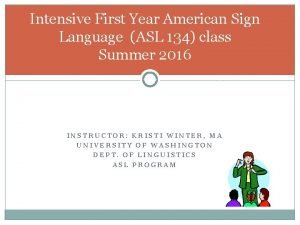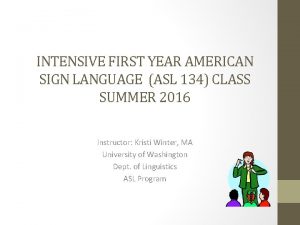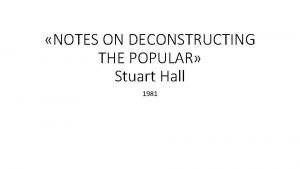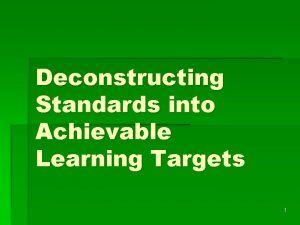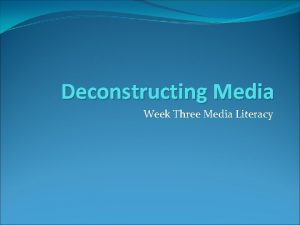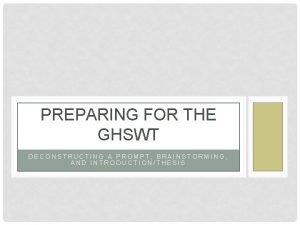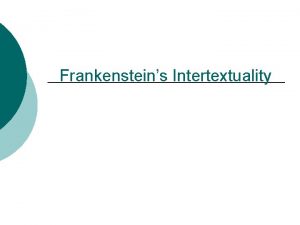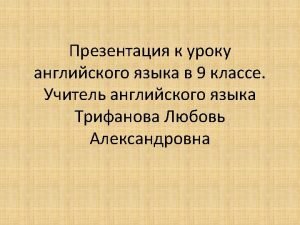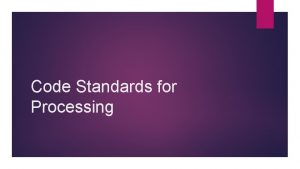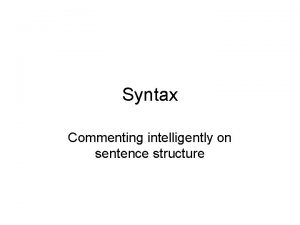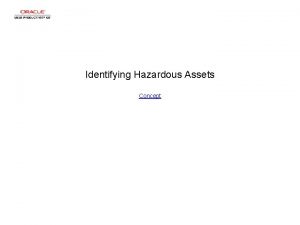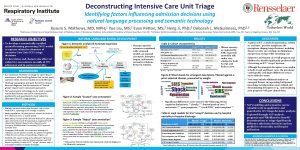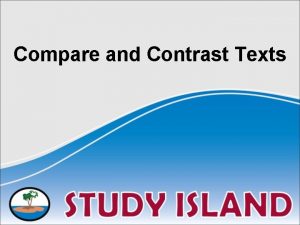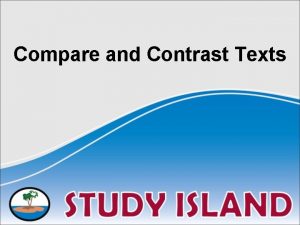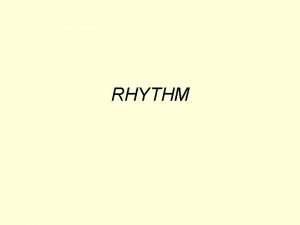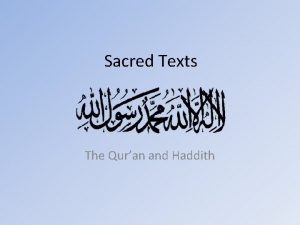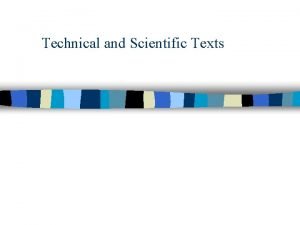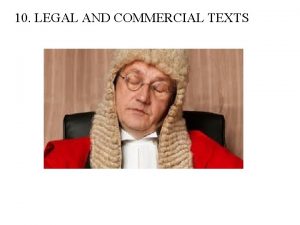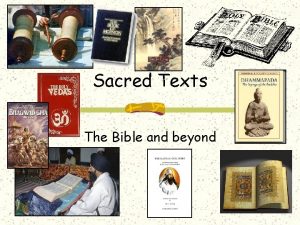Deconstructing and commenting on texts Identifying and exploring














- Slides: 14

Deconstructing and commenting on texts Identifying and exploring features of texts

Learning objectives: - recognising and understanding a range of language features; - understanding how writer’s language choice can enhance meaning. n n - Teacher’s use of ICT The application gives the teacher the opportunity to: create appropriately differentiated resources for the students; mark up texts to make patterns and features visually explicit; manipulate texts; comment on texts; plan and structure texts; use word-processing software effectively

Students’ use of ICT Students are encouraged and supported to: - use word-processing software to deconstruct and comment on texts; - manipulate and format texts n Requirements Hardware - computer and data projector or interactive whiteboard; - sufficient computers for students to use in pairs. Software - word-processing software, such as Microsoft Word; - Hot Potatoes Primer n

Ode (In ancient metre) by Mihai Eminescu I never once thought I’d ever learn how to die; Now I burn pitiably, tortured like Nessus, Forever young, with my mantle flung about me, Or like Hercules, whose robes were poisoned; I gazed up dreamily towards the star called Waters of the oceans could never put out Loneliness. Such a fire. When suddenly you loomed before me, You, my torment, painful sweetness … And I drank deep the voluptuousness of death – Merciless death. I wail devoured by my own vision, Swallowed by flames from my own pyre … Shall I rise again luminous from these ashes Like the Phoenix? Let all troubled eyes sink from my sight, Oh, sad indifference, come back to my heart; Restore me to myself, so I can die serenely, Restore me to myself!

n n You can obtain poetry texts from various websites, such as Representative poetry online at: http: //rpo. library. utoronto. ca/display/index. cfm There are various websites that contain electronic texts that are copyright free, e. g. Project Gutenberg at: http: //promo. net/pg You may wish to use an online dictionary such as www. onelook. com or those listed at: www. onelook. com/? d=all_gen.

n Strategy Framework References Reading for meaning Students are taught to adopt active reading approaches to engage with and make sense of texts: visualising, predicting, empathising and relating to own experience. Understanding the author's craft Students are taught to recognise how writers’ language choices can enhance meaning: repetition, metaphor, varied sentence structure or line length, simile, hyperbole, antithesis, etc. Group discussion and interaction Students are taught to work together logically and methodically to solve problems, make deductions, share, test and evaluate ideas.

Students’ prior knoledge Students should already: - have explored a range of texts in order to identify and understand particular language features, and how writers' language choice can enhance meaning; - have some prior knowledge of reading the kinds of text to be studied and should have appropriate technical vocabulary to support discussion n A matchig words with definitions exercise can help students remember the language features the teacher would like them to concentrate on.

Students are expected to analyse, in the poem/text, the following features: meter, ode, free verse, stanza, metaphor, antithesis, hyperbole, repetition, simile, and allusion.

Ode (In ancient metre) I never once thought I’d ever learn to die; Forever young, with my mantle flung about me, I gazed up dreamily towards the star Called loneliness n n When suddenly you loomed before me, You, my torment, painful sweetness … And I drank deep the voluptuousness of death – Merciless death. Now I burn pitiably, tortured like Nessus, Or like Hercules, whose robes were poisoned; Waters of the oceans could never put out Such a fire. I wail devoured by my own vision, Swallowed by flames from my own pyre … Shall I rise again luminous from these ashes Like the Phoenix? Let all troubled eyes sink from my sight, Oh, sad indifference, come back to my heart; Restore me to myself, so I can die serenely, Restore me to myself! n n Begin with a shared reading of the whole poem. Model how to close read the poem, going back to check meaning if appropriate and referring to what has been learned in reading prior to this lesson. Ask students to scan through the poem to see what patterns they can find in it. Collate their responses on a flip chart or whiteboard.

n - - Students should immediately notice the following characteristics: four-line stanza form; last verse shorter than the previous ones; absence of a rhyming system; use of free verse; use of figures of speech: - metahpors: my torment, painful sweetness - similes: tortured like Nessus, luminous … like the Phoenix - hyperbole: Waters of the oceans could not put out Such a fire

n n If you have a projector and whiteboard, ask a student to come to the computer and alter the appearance of the first figure of speech. Another student can do the same for the next, in a different colour, and so on, until all figures of speech have been marked and distinguished from one another. Using a large display or computer, projector and whiteboard, model for the class two or three ways of marking text, for example bold, underline, italicise or change colour. This technique may be used to identify repetitions, imagery, parts of speech, assonance, and alliteration - anything that will be more understandable to your students if the features are visibly marked.

n n n Students should spend time discussing the language features of the poem. Having identified a selection of features, ask them to highlight and insert comments to explain them. When pupils complete the task, work with one or two groups to ensure they are familiar with how to present their ideas using the computer, projector and large display. Discuss and record the discoveries made about the patterns in the poem studied. Ask one or two groups to share their findings with the rest of the class. If students should not have all the ICT skills necessary for completion of the tasks, prepare some tip sheets to leave by the computers, explaining how to highlight/format text and insert comment boxes.

Sequencing the poem n n Ask students to open the resource Ode (In ancient metre) poem text box. Using their knowledge of language features of poetry to complete this task, pupils should sequence the poem by identifying figures of speech and language features in each line and moving text boxes to ensure the poem makes sense. I gazed up dreamily towards the star Forever young, with my mantle flung about me, Called loneliness I never once thought I’d ever learn to die; Restore me to myself, so I can die serenely, Let all troubled eyes sink from my sight, Oh, sad indifference, come back to my heart Restore me to myself !

Follow-on lessons n n Confidence in the use of word-processing software and its tools opens the way for many other activities. In a follow-on lesson students could create a presentation of their own poem for the rest of the class. The presentation should include the language features chosen and how these enhance the meaning, as well as a dramatic performance of the poem. Embedding sound, video or image files in documents, students can enhance their meaning.
 4:14 commenting on family members
4:14 commenting on family members 4:14 commenting on family members
4:14 commenting on family members David's keys asl
David's keys asl Identifying and non identifying adjective clauses
Identifying and non identifying adjective clauses Adjective clause identification
Adjective clause identification Information essential
Information essential Notes on deconstructing the popular stuart hall
Notes on deconstructing the popular stuart hall Deconstructing standards examples
Deconstructing standards examples Deconstructing media examples
Deconstructing media examples Rafts writing prompts
Rafts writing prompts Deconstructing a prompt
Deconstructing a prompt Deconstructing writing prompts
Deconstructing writing prompts This create
This create Gerard genette transtextuality
Gerard genette transtextuality Read and write the activities these texts advertise
Read and write the activities these texts advertise

